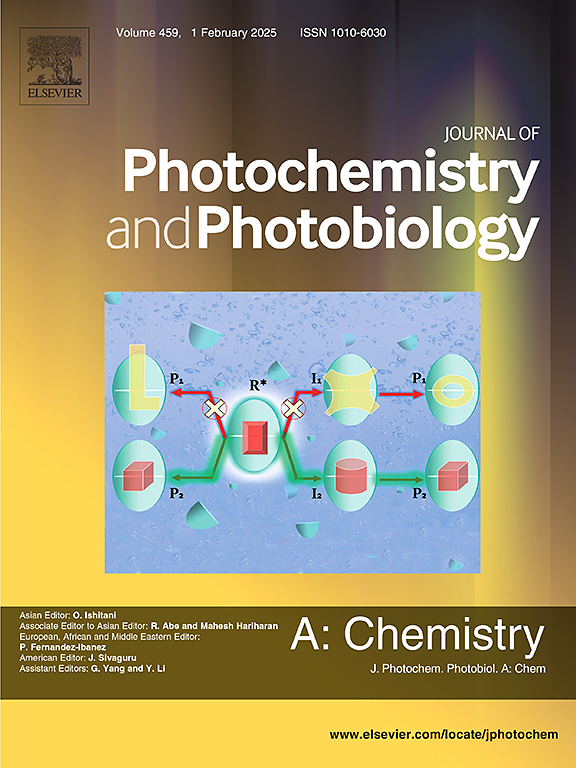偶极子影响构象平衡
IF 4.1
3区 化学
Q2 CHEMISTRY, PHYSICAL
Journal of Photochemistry and Photobiology A-chemistry
Pub Date : 2025-02-24
DOI:10.1016/j.jphotochem.2025.116362
引用次数: 0
摘要
电偶极子无处不在。它们会影响电荷转移、自组装、材料性能和酶活性。在这里,我们展示了偶极子对分子几何形状的影响。一种芳香酰胺,即 anthranilamide 的 5-N-amide 衍生物 (Aaa),具有两种偶极矩截然不同的稳定构象。核欧豪瑟效应(NOE)和密度泛函理论(DFT)分析表明,在非极性溶剂中,Aaa 主要以偶极矩较小的构象存在。介质极性的增加会促使偶极子较大的另一种结构出现。低温下核磁共振信号的分裂与在其聚集时捕获两个 Aaa 构象一致。利用密度函数理论进行的分析量化了两种构象之间的动态平衡以及溶剂极性对其的影响。分子电偶极子与介质极性之间的协同作用揭示了构象转换的范式。本文章由计算机程序翻译,如有差异,请以英文原文为准。

Dipoles affect conformational equilibrium
Electric dipoles are ubiquitous. They affect charge transfer, self-assembly, materials performance, and enzymatic activity. Herein, we demonstrate dipole effects on molecular geometry. An aromatic amide, 5-N-amide derivative of anthranilamide (Aaa), assumes two stable conformations with drastically different dipole moments. In non-polar solvents, Aaa exists predominantly as the conformer with the smaller dipole as nuclear Overhauser effect (NOE) and density-functional theory (DFT) analysis reveal. Increasing medium polarity drives the emergence of the other structure with the larger dipole. Splitting of the NMR signals at low temperature is consistent with capturing the two Aaa conformers upon its aggregation. Analysis employing density-functional theory quantifies the dynamics of the equilibrium between the two conformations and how solvent polarity affects it. This synergy between molecular electric dipoles and medium polarity reveals a paradigm for conformational switching.
求助全文
通过发布文献求助,成功后即可免费获取论文全文。
去求助
来源期刊
CiteScore
7.90
自引率
7.00%
发文量
580
审稿时长
48 days
期刊介绍:
JPPA publishes the results of fundamental studies on all aspects of chemical phenomena induced by interactions between light and molecules/matter of all kinds.
All systems capable of being described at the molecular or integrated multimolecular level are appropriate for the journal. This includes all molecular chemical species as well as biomolecular, supramolecular, polymer and other macromolecular systems, as well as solid state photochemistry. In addition, the journal publishes studies of semiconductor and other photoactive organic and inorganic materials, photocatalysis (organic, inorganic, supramolecular and superconductor).
The scope includes condensed and gas phase photochemistry, as well as synchrotron radiation chemistry. A broad range of processes and techniques in photochemistry are covered such as light induced energy, electron and proton transfer; nonlinear photochemical behavior; mechanistic investigation of photochemical reactions and identification of the products of photochemical reactions; quantum yield determinations and measurements of rate constants for primary and secondary photochemical processes; steady-state and time-resolved emission, ultrafast spectroscopic methods, single molecule spectroscopy, time resolved X-ray diffraction, luminescence microscopy, and scattering spectroscopy applied to photochemistry. Papers in emerging and applied areas such as luminescent sensors, electroluminescence, solar energy conversion, atmospheric photochemistry, environmental remediation, and related photocatalytic chemistry are also welcome.

 求助内容:
求助内容: 应助结果提醒方式:
应助结果提醒方式:


